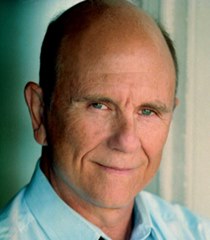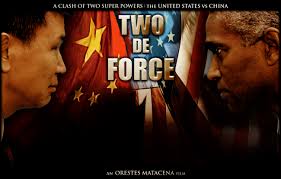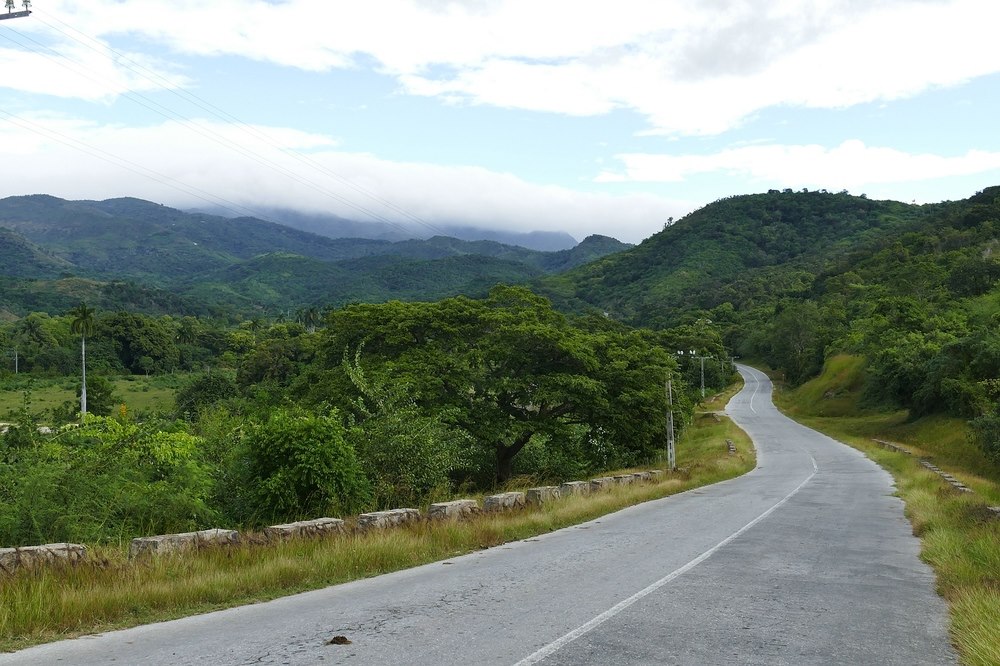ORESTES MATACENA, ACTOR, FILM AND TV DIRECTOR.
Orestes Matacena has worked as an actor with high profile directors on films, television and commercials.
Orestes was born in Havana, Cuba to Italian immigrants and grew up on a sugar mill plantation where the country and all kinds of animals, especially horses, were a large part of his life. He describes himself as a “third world country boy.” But his business partner, Orna Rachovitsky, says he is a “hillbilly in an Armani suit.”
Orestes escaped from Cuba on an airplane to Mexico before immigrating legally to the United States and becoming an American Citizen.
After living in Mexico illegally for exactly ninety days, Orestes arrived in the United States, October 30, 1964, literally without a cent in his pocket and without speaking the English language. He settled in Titusville, Florida and worked nine hours a day, six days a week washing dishes at a restaurant called the “Ranch House” at a weekly pay of thirty dollars.
Soon after, Orestes became a short order cook and worked on Cocoa Beach before moving to Miami. In Miami he worked as a cook, a clothing salesman and a car salesman. The first month as a car salesman he lived sparsely, eating only one apple and half a slice of white toast every three days until he finally sold his first car one month later. That special day he had a feast.
A dreamer at heart with an entrepreneurial mindset, Orestes decided it was time to start up a playhouse. His first theater was in the living room of his Miami apartment that he shared with his girlfriend Phyllis Redden, a North Carolina bombshell. Then, he rented an office space and founded “Theater 66” with Cuban actor/director, Miguel Ponce. They produced ten plays together at that theater.
In 1968, Orestes wrote his first play, “The Gym.” Since then, he expanded his versatility as a playwright and screenwriter with three plays and more than twenty five screenplays and various television concepts to his credit to date (2007). His writing encompasses a variety of styles: thrillers, dramas, comedies, horror and action-adventures.
Azúcar amarga (1996), (Bitter Sugar) a movie Orestes wrote for Hollywood director Leon Ichaso about a young couple living under the Cuban Communist Tyranny, opened to excellent reviews and was shown to the Human Rights Commission in Geneva, Switzerland and to the United States Congress. For Orestes this was a spiritual and rewarding experience.
In 1968, Orestes moved to New York. With only a few dollars in his pocket and knowing no one, he had no other choice but to sleep at the Port Authority bus station for a few days. By the fourth month of his arrival, he raised $25,000 and was producing and acting in his first Off-Broadway play called “The Grab Bag.”
In 1969, Orestes and Miguel founded “The New York Theater of the Americas,” where they produced more than thirty original plays. Orestes acted in many of the productions, playing a variety of roles ranging from a scruffy dog to an Italian Count, and directed his first play. Miguel’s role was primarily as a director.
Not only did Orestes work in his own playhouse, but he was hired as an actor in many prestigious New York theater companies such as “Cafe La Mamma,” “Stage 73,” “Dume,” “The Henry Street Playhouse,” “INTAR” and “The Astor Place Theater.”
Years later, in 1975, Orestes founded “The New York Cuban Cultural Center” along with Ruben Rabasa, Ivan Acosta and Clara Hernandez, where they produced twelve plays, recitals, poetry nights, art exhibitions and political debates about the Cuban Communist tyrannical situation oppressing the people living in that beautiful island. Thanks to Ivan, the Center is still part of the New York scene.
As a film actor Orestes has played the antagonist in many Hollywood Studio films such as The Mask (1994) starring Jim Carrey and Diggstown (1992) with James Woods and Louis Gossett Jr. just to name a couple.
In the advertising world, Orestes has worked in 37 commercials so far (2007), nine of them directed by Marcus Nispel. The New York Museum of Modern Art has made Mr. Nispel’s body of work part of its Permanent Collection. Thanks to Mr. Nispel’s artistic endeavor, Orestes is part of that wonderful collection.
Orestes is well known for not taking “no” for an answer. He raised the capital to produce and direct a feature movie from a screenplay he wrote called Tainted (1987). However, he decided that rather than consuming his time finding investors to bankroll his movies he would finance them himself and use that time to sharpen his creative vision.
Orestes is, as the French would say, a real film auteur. His body of work to date (2007) as a filmmaker includes “In Plain View (2008),” Sexgunsmoney@20 (2002), Cuba Libre (1999), Fatal Encounter (1981), Tainted (1987), “James Gilbert Albright and the Haunted Studio,” “The Two Faces of Ruben Rabasa,” “Aguabella” and “Theater in the Parks.” He has written, directed, produced and edited almost all of his work.
Agencies/Various/IMDb/Orna Rchovitsky/InternetPhotos/youtube.
The Cuban History, Hollywood.
Arnoldo Varona, Editor.
ORESTES MATACENA, ACTOR, DIRECTOR DE CINE Y TELEVISION. .
Orestes Matacena ha trabajado como actor con un alto perfil directores de cine, televisión y publicidad.
Orestes nació en Matanzas, Cuba a los inmigrantes italianos y creció en una plantación azucarera en el país y todo tipo de animales, especialmente caballos, eran una gran parte de su vida. Se describe a sí mismo como un “tercer chico país del mundo.” Pero su socio de negocios, Orna Rachovitsky, dice que es un “hillbilly en un traje de Armani.”
Orestes se escapó de Cuba en un avión a México antes de emigrar legalmente a Estados Unidos y convertirse en un ciudadano americano.
Después de vivir en México de manera ilegal durante exactamente de noventa días, Orestes llegó a los Estados Unidos, 30 de Octubre de 1964, literalmente, sin un centavo en el bolsillo y sin hablar el idioma Inglés. Se instaló en Titusville, Florida y trabajó nueve horas al día, seis días a la semana lavando platos en un restaurante llamado la “Casa de rancho” a una paga semanal de treinta dólares.
Poco después, Orestes se convirtió en un corto cocinero orden y trabajó en Cocoa Beach antes de mudarse a Miami. En Miami, trabajó como cocinero, vendedor de ropa y un vendedor de coches. El primer mes como un vendedor de coches vivió poco, comer sólo una manzana y media de una rebanada de pan tostado blanco cada tres días hasta que finalmente vendió su primer coche un mes más tarde. Ese día tan especial que tenía una fiesta.
Un soñador en el corazón con una mentalidad emprendedora, Orestes decidió que era hora de poner en marcha una casa de juegos. Su primer teatro se encontraba en la sala de estar de su apartamento de Miami que compartía con su novia Phyllis Redden, una bomba de Carolina del Norte. Luego, alquiló un espacio de oficina y fundó “Teatro 66” con el actor / director cubano, Miguel Ponce. Produjeron diez obras de teatro juntos en ese teatro.
En 1968, Orestes escribió su primera obra de teatro, “El Gimnasio.” Desde entonces, ha ampliado su versatilidad como dramaturgo y guionista con tres obras de teatro y más de veinte y cinco guiones y varios conceptos de televisión en su haber hasta la fecha (2007). Su escritura abarca una variedad de estilos: los thrillers, dramas, comedias, terror y acción-aventuras.
Amarga Azúcar (1996), (Azúcar Amargo) una película Orestes escribió para el director de Hollywood Leon Ichaso sobre una pareja joven que vive bajo la tiranía comunista cubana, abierta a excelentes críticas y se demostró que la Comisión de Derechos Humanos en Ginebra, Suiza y los Estados Congreso de Estados Unidos. Para Orestes fue una experiencia espiritual y gratificante.
En 1968, Orestes se mudó a Nueva York. Con sólo unos pocos dólares en el bolsillo y sin conocer a nadie, no tenía más remedio que dormir en la estación de autobuses de la Autoridad Portuaria durante unos días. Por el cuarto mes de su llegada, se recaudaron $ 25.000 y fue producir y actuar en su primera obra fuera de Broadway llamado “The Grab Bag”.
En 1969, Orestes y Miguel fundó “El Teatro de Nueva York de las Américas”, donde se producen más de treinta obras de teatro originales. Orestes actuó en muchas de las producciones, jugando una variedad de funciones que van desde un perro desaliñado a un conde italiano, y dirigió su primera obra de teatro. El papel de Miguel fue principalmente como director.
No sólo Orestes trabajar en su propia casa de juegos, pero fue contratado como actor en muchas empresas prestigiosas de teatro de Nueva York como “Café La Mamma”, “Stage 73”, “Dume”, “The Street Playhouse Henry”, “INTAR “y” El Astor Place Theatre “.
Años después, en 1975, Orestes fundó “El Centro Cultural Cubano de Nueva York”, junto con Ruben Rabasa, Iván Acosta y Clara Hernández, donde se producen las doce obras de teatro, recitales, noches de poesía, exposiciones de arte y debates políticos sobre la situación tiránica Comunista opresora cubana las personas que viven en esa hermosa isla. Gracias a Iván, el Centro sigue siendo parte de la escena de Nueva York.
Como actor de cine Orestes ha jugado el antagonista en muchas películas de Hollywood Studio como La máscara (1994), protagonizada por Jim Carrey y Diggstown (1992) con James Woods y Louis Gossett Jr. sólo por nombrar un par.
En el mundo de la publicidad, Orestes ha trabajado en 37 comerciales hasta el momento (2007), nueve de ellas dirigida por Marcus Nispel. El Museo de Nueva York de Arte Moderno ha hecho el cuerpo de la pieza de trabajo de su Colección Permanente del Sr. Nispel. Gracias al esfuerzo artístico del Sr. Nispel, Orestes es parte de esa maravillosa colección.
Orestes es bien conocido por no tomar “no” por respuesta. Levantó la capital para producir y dirigir un largometraje con un guión que escribió llamado Tainted (1987). Sin embargo, decidió que en lugar de consumir su tiempo para encontrar inversores para financiar sus películas se financiaría él mismo y utilizar ese tiempo para afilar su visión creativa.
Orestes es, como dirían los franceses, un verdadero autor de la película. Su cuerpo de trabajo hasta la fecha (2007) como cineasta incluye “En Plain View (2008),” Sexgunsmoney @ 20 (2002), Cuba Libre (1999), Encuentro Fatal (1981), Tainted (1987), “James Gilbert Albright y the Haunted Estudio “,” Las dos caras de Ruben Rabasa “,” Aguabella “y” Teatro en los Parques “. Ha escrito, dirigido, producido y editado casi la totalidad de su obra.
Agencias / Varios / IMDb / Orna Rchovitsky / InternetPhotos / youtube.
The Cuban History, Hollywood.
Arnoldo Varona, Editor.



 ORESTES MATACENA, Actor, Films and TV Director. (Born: Havana). + ORESTES MATACENA, Actor, Director de Cine y Televisión. (Nacido en Habana).
ORESTES MATACENA, Actor, Films and TV Director. (Born: Havana). + ORESTES MATACENA, Actor, Director de Cine y Televisión. (Nacido en Habana).


